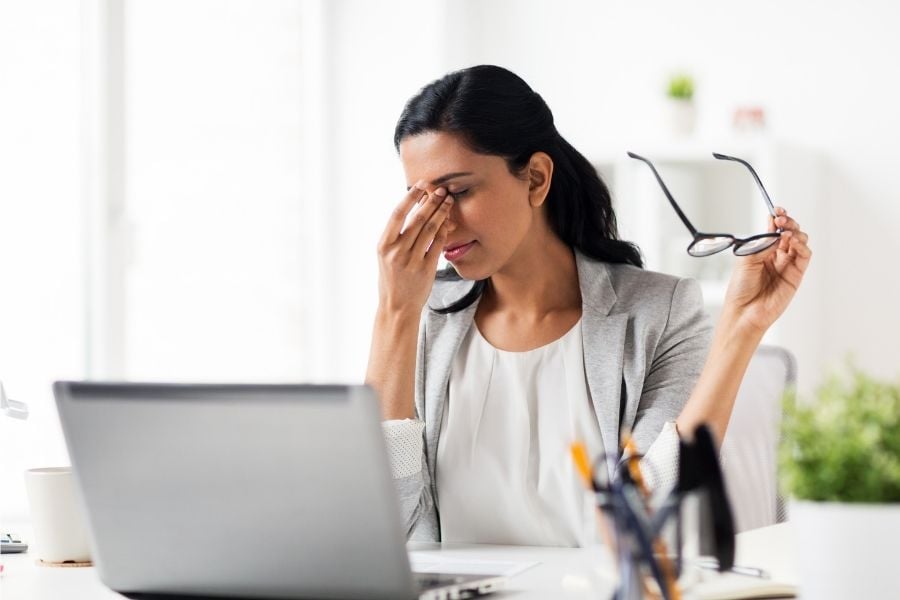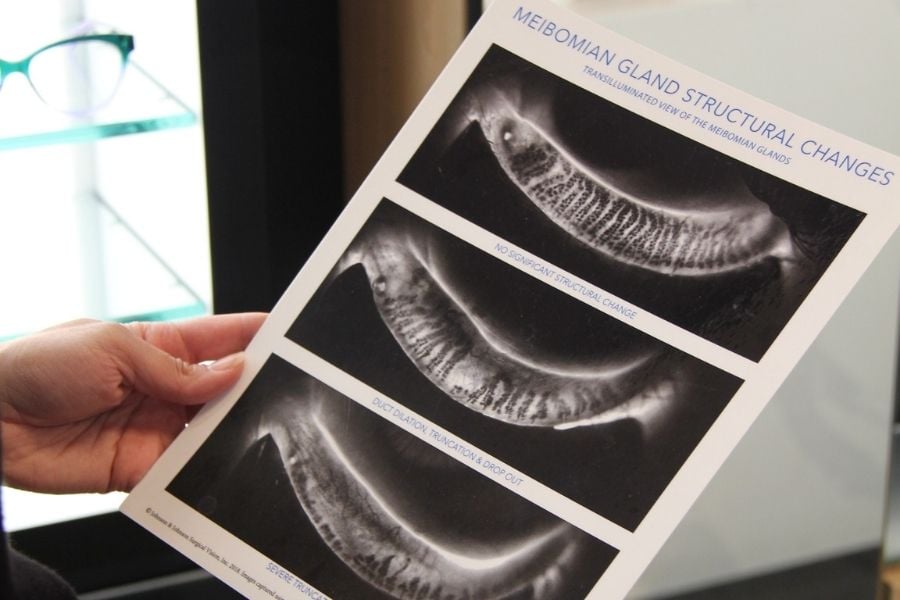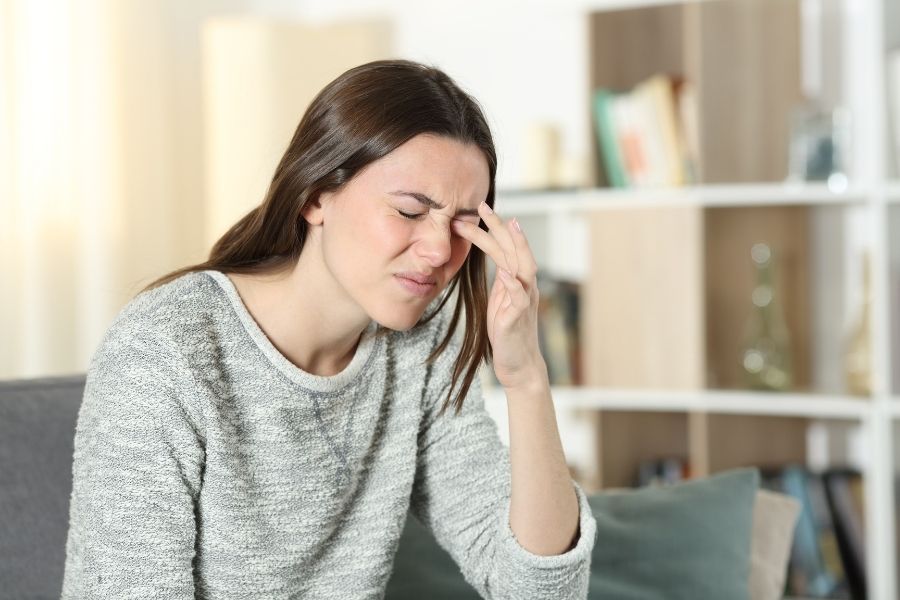Can you guess how many times you blinked today? It’s a hard number to estimate, so we’ll do the hard work for you. Roughly, the answer is about 15,000, but that number can drastically decrease if you’re a frequent screen user like most of us.
Our bodies are incredible machines when you sit down and think about them. In the course of a day, they do so many different things–from walking, laughing, eating and reading to polishing off a cup of coffee or two first in the morning.
Actions that we consciously decide on doing (like clicking on this blog post, for example), take place in the somatic nervous system. Essentially, it's responsible for regulating voluntary movement. The autonomic nervous system on the other hand regulates involuntary actions, which are the ones we don’t think about doing. Examples include digesting food, our hearts beating, and—you guessed it—blinking our eyes.
“A lack of blinking is one of the main causes of dry eyes,” says Andrew Liang, Optometrist at HealthOne. Although blinking is involuntary, certain things can reduce how often we do it. “When you’re doing tasks that you have to concentrate on, like looking at a screen, looking at a phone, or even reading a really good novel, we tend to not blink as much,” he explains.
It’s safe to assume that most of us are spending a decent amount of time looking at screens these days. Add on top of that how many of us are working from home, and our time spent looking at them increases significantly.
As Andrew explains, the more we look at screens, the less frequently we blink. Less blinking can lead to uncomfortable symptoms and dry eye disease over time. We sat down with him to get the full scoop about dry eyes and the power of blinking.
Dry Eye Symptoms
The tears in your eyes are composed of two main layers. One is water, known as aqueous, and the other is oil, known as lipids. Dry eyes can either be missing the aqueous layer of the tears, the lipid layer, or a combination of both. In most cases, it’s the lipid layer that is missing.
“When we talk about the leading causes of dry eyes, usually it’s the missing of the oils and that’s the main reason why people feel dry eye symptoms,” Andrew says. “There are different reasons why you can be missing those oils, but the main one is a lack of blinking.”
We’ll be focusing on blinking and screen usage in this article, but you can learn more about the other causes in our previous interview with Andrew.
The symptoms of dry eyes can be mild, moderate, or severe. A general feeling of dryness is one of the most common ones, along with redness, itchiness, and a burning or stinging sensation. Some people may experience watery eyes, especially outside in windy conditions. It can also cause you to be more sensitive to light, have blurry vision, or feel like something is stuck in your eyes.
Each person’s experience is different, and experiencing symptoms is a strong indication that you should consider paying a visit to an Optometrist. But how exactly does a lack of blinking translate to these symptoms in the first place?

Taking a Closer Look
It’s time to get familiar with your handy dandy (and very important) Meibomian glands. These are oil glands found in your eyelids, and they’re responsible for expressing the oil in your tears that keep your eyes lubricated and functioning properly.
“When you’re staring at a screen, more often than not you’re concentrated on doing work or Excel, something like that,” Andrew explains. “When that happens, you don’t blink your eyes enough, and so inside the eye those Meibomian glands produce oil, but without blinking it isn’t being secreted.”
The longer this goes on the more damaged your Meibomian glands will become. You can’t exactly see the health of your glands with the naked eye, which is why Optometrists like Andrew use a specific machine to capture a high-resolution image of them. This gives them a closer look at how severe the blockages and degradation are so they can make the proper recommendations about treatment and next steps.
"The problem with these glands is once they’re dysfunctional for too long, they will actually die off,” warns Andrew. “If they die off, they also don’t grow back. That’s why for people who are on a screen quite a bit, we want to take a look at their eyes pretty consistently.”
For most of us, the amount of time we spend looking at screens won’t be decreasing in the foreseeable future. This is why regular visits to an Optometrist are so important so you can detect any obstructions in the glands early on before they get worse.
Waiting until your dry eye symptoms become severe can lead to a lifetime of having to put oils in your eyes or specific types of treatment, which can be costly. We asked Andrew for the details about what dry eye therapy options are available to his patients.

Dry Eye Treatment Options
There are different treatment options when it comes to dry eyes, and your prescribed course of action will depend on your unique case. Here’s an overview of the options available from our Optometry clinic at HealthOne:
- Omega-3 supplements. These can be taken daily in the form of a pill or capsule. Omega-3 fatty acids have been shown as an effective way to control inflammation caused by dry eyes and can increase your production of oil within the tears.
- A hot compress. In the medical world, a hot compress is also referred to as a Bruder mask. “It’s a mask with beads that you stick in the microwave. It warms up, and you put it on your eyes, which helps to warm up the oils,” Andrew shares.
- Blink exercises. Did you know that there’s actually a proper way to blink? According to Andrew, the correct way helps to express more oils—but many of us aren’t doing it correctly. Check out this video for a detailed explanation similar to the instructions Andrew shares with patients at our clinic.
- LipiFlow Treatment. As a Dry Eye Specialty clinic, this is one of the most popular options that we offer at HealthOne. LipiFlow treatment takes only 12 minutes and significantly reduces Meibomian gland obstructions while improving dry eye symptoms.
Based on your unique needs and the severity of your symptoms, Andrew and our team at HealthOne Optometry can help you navigate the best course of action for treating your dry eyes. While treatment is an important part of the work we do, we’re also strong advocates of preventative health.
“I’m always a firm believer of preventative medicine,” Andrew says. “If we can avoid dry eyes altogether, that’s great. But in the event that you didn’t do anything and we catch it, there are still things we can do.”
How to Prevent Dry Eyes
In order to prevent dry eyes, you need to take a real, unbiased look at your current habits and lifestyle. If you work on a computer for 12-15 hours a day, for instance, there’s a strong chance that dry eyes will eventually become a problem.
Andrew recommends scheduling breaks throughout your day so you can let your eyes rest. Every 30-40 minutes is a good frequency to aim for. During your breaks, try some forced blinks (like the ones previously mentioned in this video) to make sure your eyes are expressing enough oil.
Taking Omega-3 fatty acids can also promote better eye health in general and support adequate oil production. Most supplements come in the form of fish oil, and brands like NutraVege create plant-based options that are just as effective. Visit our Pharmacy to pick up some Omega-3's the next time you visit our clinic!
The last and most effective way to prevent dry eyes is to visit an Optometrist for an eye exam. Some people may be experiencing Meibomian gland atrophy without noticing any symptoms, or might not think their symptoms are “severe” enough for medical attention. Whether or not you have specific concerns about your eyesight, regular visits to the eye doctor are essential.
Adults should get an eye exam every 2 years unless they have a particular issue, like diabetes, that may affect their vision. Seniors over 65 and children under 19 should come in every year. Visiting the Optometrist is a small thing you can do today to prevent dry eyes from developing.
“If we can avoid symptoms in the first place, that’s ideal, but in the event that you do develop dry eyes, there’s still ways to find relief,” Andrew concludes.
Due for an eye exam? Click here to book an eye appointment at HealthOne Optical.
One Life. Live Inspired.

